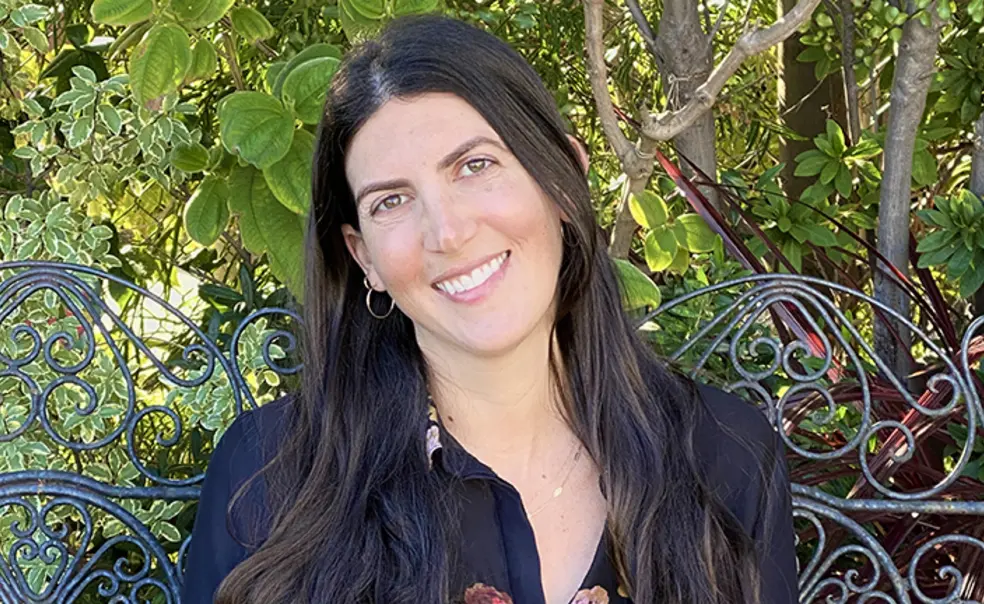Paris A. Spies-Gans *18 Is Pulling Women Artists into Mainstream Art History
‘You can tell the story everyone is familiar with while featuring artists who were women’
In 1814, Marie-Guillemine Benoist had to give up her career as an artist in Paris when her husband was appointed to a prominent position under King Louis XVIII of France.
“Don’t be angry with me if at first my heart bled at the course I was forced to take — and ultimately, to satisfy a prejudice of society to which one must, after all, submit,” she wrote her husband. “But so much study, so many efforts, a life of hard work, and after that long time of testing — success; and then to see them almost an object of humiliation — I could not bear the idea.”
Benoist had studied with the great painter Jacques-Louis David, shown paintings at the Salons held at the Louvre in Paris — the exhibitions that were the pinnacle of 18th and 19th century French painting — and won awards for some of that work. She had been paid thousands of francs to paint official portraits of Napoleon and other members of his regime. And yet she was forced to sacrifice her career for the sake of social propriety.

Benoist “ultimately faced a hurdle that was, for her, insurmountable, and yet before that she had this career that almost anyone of either sex would have coveted and craved,” Spies-Gans said. “Even as she hit every major artistic accomplishment, there were these restrictions she inevitably faced. I believe strongly that while acknowledging these restrictions, it is important to recognize all the things that women still did.”
Women have largely been excluded from the history of art, including the period on which Spies-Gans focused. But in researching the archives of the Paris Salons and the Royal Academy in London, she found that hundreds of women in late 18th and early 19th century Paris and London exhibited and sold their work, sometimes for considerable amounts of money.
“No one including myself thought there were significant numbers of women artists from the period,” Spies-Gans says. “It wasn’t what I expected to find or what I expected to write.”
Because women didn’t own the profits of their art, Spies-Gans says, “it’s been assumed they simply weren’t able to be professionals. But when you look at their art and the letters they wrote, you see that they’re very forceful economic players. They found ways around the restrictions placed upon them.”
That perspective will affect how collections are displayed at museums, where works by female artists such as Benoist are often hidden away in storage. The Metropolitan Museum of Art in New York is reinstalling its 18th century European galleries this year, and, Spies-Gans says, “They’re paying a lot of attention to the balance between highlighting work by women and integrating it into the story they tell.”
Says David Pullins, an associate curator of 17th and 18th century French, Italian, and Spanish painting at the Met, “Most museums have traditionally singled out women painters as a category unto themselves, a reflection of scholarship, much of it similarly well intentioned.”
But Spies-Gans’ book “makes a persuasive invitation to move the discussion and museum displays forward to a more subtle, accurate integration of these painters among their peers,” Pullins says. “It’s an invitation we were eager to accept.” Because the museum has a number of paintings by women from 18th century France, he adds, “We’re able to weave the story over the course of multiple galleries rather than in a single punctuation.”
Now a historian living in Cambridge, Massachusetts, Spies-Gans is working on her second book, tentatively titled A New Story of Art, due out in 2026. Her current project, she says, is “a much bigger, broader revision of traditional art histories. My goal is to give the art historical narrative a necessary update, showing that you can tell the story everyone is familiar with while featuring artists who were women.”












No responses yet